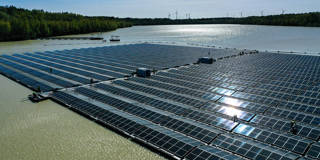The current discussion in Europe about de-risking trade tends to address the issue in general terms, even though various types of trade pose very different risks. A more nuanced approach would distinguish between inputs that the economy needs to function and those that are needed to build up future production capacity.
MILAN – Trade always implies mutual dependency: if both sides benefit from exchanging goods and services, both sides lose when transactions are suspended. Until relatively recently, policymakers focused on the benefits – the efficiencies and opportunities trade creates. But in an age of intensifying geopolitical conflict, the risks – particularly of supply disruptions – are increasingly taking center stage. European Commission President Ursula von der Leyen’s recently proposed strategy to “de-risk” trade is a case in point.
The problem with the current discussion about de-risking trade is that it tends to address the issue in general terms, even though various types of trade pose very different risks. A more nuanced approach would begin by distinguishing between inputs that the economy needs to function (for example, raw materials like natural gas or minerals) and inputs that are needed to build up future production capacity (such as solar panels).
There is one relatively straightforward way to de-risk trade in minerals: strategic stockpiles. Because minerals are generally easy to store, maintaining a stockpile – say, the equivalent of one year’s supply – would cost only as much as the interest on the initial investment. For example, at current interest rates, the European Union could store a year’s worth of rare earth minerals for less than €5 million ($5.5 million) annually, given that total imports in 2021 amounted to €120 million.

MILAN – Trade always implies mutual dependency: if both sides benefit from exchanging goods and services, both sides lose when transactions are suspended. Until relatively recently, policymakers focused on the benefits – the efficiencies and opportunities trade creates. But in an age of intensifying geopolitical conflict, the risks – particularly of supply disruptions – are increasingly taking center stage. European Commission President Ursula von der Leyen’s recently proposed strategy to “de-risk” trade is a case in point.
The problem with the current discussion about de-risking trade is that it tends to address the issue in general terms, even though various types of trade pose very different risks. A more nuanced approach would begin by distinguishing between inputs that the economy needs to function (for example, raw materials like natural gas or minerals) and inputs that are needed to build up future production capacity (such as solar panels).
There is one relatively straightforward way to de-risk trade in minerals: strategic stockpiles. Because minerals are generally easy to store, maintaining a stockpile – say, the equivalent of one year’s supply – would cost only as much as the interest on the initial investment. For example, at current interest rates, the European Union could store a year’s worth of rare earth minerals for less than €5 million ($5.5 million) annually, given that total imports in 2021 amounted to €120 million.